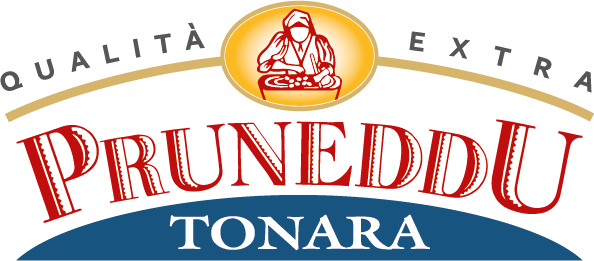Sardinian Honey
The nectar is secreted by certain organs that are called nectaries that are placed in the flower or in other parts of the plant. Honeydew is also derived from plant sap. It comes from parasitic insects that live on plants. They suck up the sap to feed themselves and the honeydew is a result of that process.
How it becomes Honey
After collecting the nectar, the bee goes back into the hive, after which it takes the drop of nectar that it collected to another bee. It continues to do the same with other bees. After multiple series of transfers from bee to bee, the raw material that they obtained is stored for safekeeping and to feed themselves. But not before the percentage of water inside the nectar fell to 18%.
Composition
The composition of honey is very complex. There are sugars, water, mineral salts, organic acids and enzymes, proteins, vitamins and a variety of other types of ingredients. There are also likely to be substances (although quantitatively small) that are not yet known to us.
Organic and nutritional properties
Honey has a high caloric value. It provides approximately 320 calories per 100 grams of product (regular kitchen sugar gives 400 calories per 100 grams of product). As honey is composed mainly of sugars (glucose and fructose) it is very easy to digest. In fact, glucose, with its high energetic value, immediately enters into the blood-circulation, while fructose is digested a bit more slowly. In this way fructose functions as an energy source because it has to be converted into glucose by the liver before the body can consume it.
Honey, therefore, provides an immediate energy supply, without an extensive digestive process. For this reason honey is highly recommended in the diet of people that practice sports or for others that might need a quick energy boost. It is also very good to integrate honey into the diet of children.
In addition of sugars there are a lot more nutrients in honey like vitamins, mineral salt, enzymes, aromatic substances and trace elements. All of this gives more value to honey as an ingredient in food products. Honey sweetens more and better than regular kitchen sugar and has less calories so it also fits perfectly in diets of those that count calories.
Honey has been widely recognized for its bacteriostatic effect (probably based upon the presence of hydrogen peroxide and gluconic acid), the trophic activity and its hepatoprotective properties within the liver (however, remembered that it may also have a slightly laxative effect).
Almonds
Nutritional Informations
Like all oily seeds, almonds have a decent amount of calories since half of their weight is made out of fats. Nevertheless they do not contribute to weight gain as long as they are consumed in moderation and in the recommended amounts. The fatty acids in almonds are, in fact, for the bigger part, unsaturated fatty acids. Hundred grams of sweet almond contains 571 calories, 24.19 grams of protein, 50.61 grams of fat and 2,74 grams of carbohydrate. Vitamin E can be found in the ratio of 23-26 milligram per hundred grams of edible product.
The mineral that can be found the most in almonds is the mineral magnesium. In a hundred gram of peeled almonds there is around 270 milligram of this mineral. Also in a fairly high doses is calcium with around 220 milligram. Iron is around 3 milligrams.
The Hazelnuts
Hazelnuts are a good source of healthy nutrients if properly introduced in a balanced and healthy diet. Thanks to their specific properties they are considered as an ‘elixir of life. As a matter of fact, they help people in their fight against old age, to combat bad cholesterol and to prevent many diseases related to the cardiovascular system. So, the consumption of hazelnuts is highly recommended because even in small quantities as a snack they are already beneficial to your health.
Nutritional Informations
Just like most nuts, also hazelnuts consist for a great part out of fat. Even around 60% of the total weight. However, hazelnuts are a source of good fats. Considering the total amount of fat, hazelnuts contain a good 79% of so called good fats (mono-unsaturated, such as oleic acid) and a percentage of only 4-8% saturated fats(those are the less good ones).
In addition, they also contain short-chain vegetable omega 3 fats (alpha-linolenic acid ). The protein source of hazelnuts is of good quality, especially because rich in the amino acid
2/5 arginine. Especially for vegetarians and people who are taking proteine-rich food of animal origin, it is important to include hazelnuts into their diet. The presence of dietary fiber in hazelnuts is also excellent. A serving of 30 grams of hazelnuts (as suggested by nutritionists) provides more than 10% of the daily recommended fiber in a healthy diet.
Hazelnuts have an extraordinary nutritional density for trace elements like manganese, copper, phosphorus, magnesium, iron, potassium and calcium.
The Hazelnuts
Hazelnuts are a good source of healthy nutrients if properly introduced in a balanced and healthy diet. Thanks to their specific properties they are considered as an ‘elixir of life. As a matter of fact, they help people in their fight against old age, to combat bad cholesterol and to prevent many diseases related to the cardiovascular system. So, the consumption of hazelnuts is highly recommended because even in small quantities as a snack they are already beneficial to your health.
Nutritional Informations
Just like most nuts, also hazelnuts consist for a great part out of fat. Even around 60% of the total weight. However, hazelnuts are a source of good fats. Considering the total amount of fat, hazelnuts contain a good 79% of so called good fats (mono-unsaturated, such as oleic acid) and a percentage of only 4-8% saturated fats(those are the less good ones).
In addition, they also contain short-chain vegetable omega 3 fats (alpha-linolenic acid ). The protein source of hazelnuts is of good quality, especially because rich in the amino acid
2/5 arginine. Especially for vegetarians and people who are taking proteine-rich food of animal origin, it is important to include hazelnuts into their diet. The presence of dietary fiber in hazelnuts is also excellent. A serving of 30 grams of hazelnuts (as suggested by nutritionists) provides more than 10% of the daily recommended fiber in a healthy diet.
Hazelnuts have an extraordinary nutritional density for trace elements like manganese, copper, phosphorus, magnesium, iron, potassium and calcium.
The Walnuts
Nutritional Informations
Walnut has many nutritional characteristics and a high energy value. Not only is the fruit rich in poly-unsaturated fatty acids, excellent nutritional elements for the human body, but also its leaves are considered as a remarkable aromatic ingredient in cooking. They also use the leaves in the aging and seasoning process of some cheeses.
Walnuts are made, for the greater part, out of simple carbohydrates and protein. Besides that they are also rich in fiber and there are mineral salts in abundance. Mineral salts such as calcium, iron, fosfor and potassium. Next to all those trace elements the nut is also a source of vitamins of which thiamine is the most noteworthy one.
Walnuts are a very important nutritient in a healthy diet, a fountain of beneficial properties. When inserted into our daily diet they are able to keep cholesterol levels low and maintain cardiovascular risks under control. They also appear to limit the occurrence of some cancers and help to keep the blood pressure low. Therefore they are widely recognized as an important natural remedy in cases of hypertension. Of course, as with everything in life, it is important not to exaggerate in the amounts and portions. It is a highly caloric nutrient that generates 650 calories from a mere 100 grams of product. The perfect daily consumption, in order to cover our need for the essential nutrients, is three walnuts per day. To enjoy in a salad, or for breakfast in your yoghurt or, why not, whilst you are enjoying our delicious nougat.
Contact us for informations

PRUNEDDU SALVATORE S.r.l.
Phone from Italy 0784 63805 - from abroad +39 784 63805
Fax from Italy 0784 1782013 - from abroad +39 784 1782013
E-mail : info@pruneddu.it
Site Map

Home – Factory – Products – Unique Nougats – Ingredients - Consumption and Conservation – Where we are – Contacts
Biological – Specialities – Traditional – Pruneddu Line – Sardinian Nougat Line - Tonara Nougat Line – Arasulè Line – Sardinian Packaging Line
About us - Gallery - The Nougat Fair - TonaraMeteo.it - Facebook - Instagram
PRUNEDDU SALVATORE S.r.l.
Via Porru, 13 - 08039 - TONARA (NU) / P.Iva: 01287840910 / Privacy & Cookies Policy
Contact us for informations

PRUNEDDU SALVATORE S.r.l.
Phone from Italy 0784 63805 - from abroad +39 784 63805
Fax from Italy 0784 1782013 - from abroad +39 784 1782013
E-mail : info@pruneddu.it
Site Map
PRUNEDDU SALVATORE S.r.l.
Via Porru, 13 - 08039 - TONARA (NU) / P.Iva: 01287840910 / Privacy & Cookies Policy
Site powered by


